Does your house seem to be overrun by toys? Do you find yourself wishing that there was a way to declutter the toy room, but you don’t know where to start? Read on for great tips for how to declutter toys and tips for decluttering with kids.
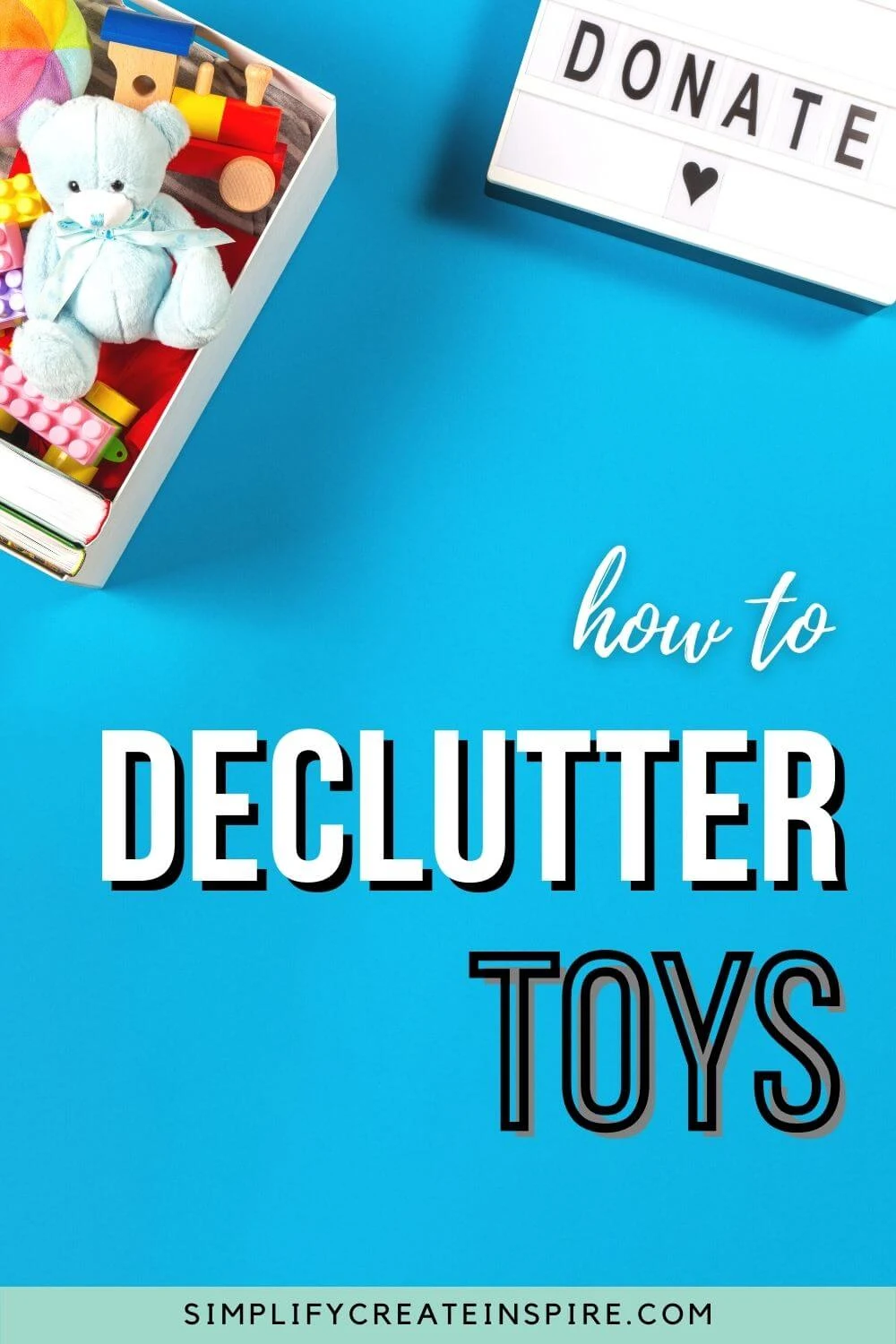
The Ultimate Guide To Decluttering With Kids
Decluttering with kids can be really hard. You don’t want your children to think that you’re trying to take away their favourite things, and yet when there are just so many of them, something has got to give!
If you have ever tried to declutter toys with your kids, you are likely very familiar with their protests at the thought of parting with 99.9% of their belongings!
Even worse are those moments when you uncover some long-forgotten unused toys that you know they have not missed in the slightest, only to renew their excitement for these things as you suggest getting rid of them.
This alone makes it very tempting, and often beneficial, to declutter toys when your kids aren’t there, with hope they don’t even realise anything is gone.
Yet there are a lot of benefits to decluttering children’s toys with their help and this guide on how to declutter toys will help make this process a lot less painful!
Try a 30-day decluttering challenge with tips on how to declutter each area:
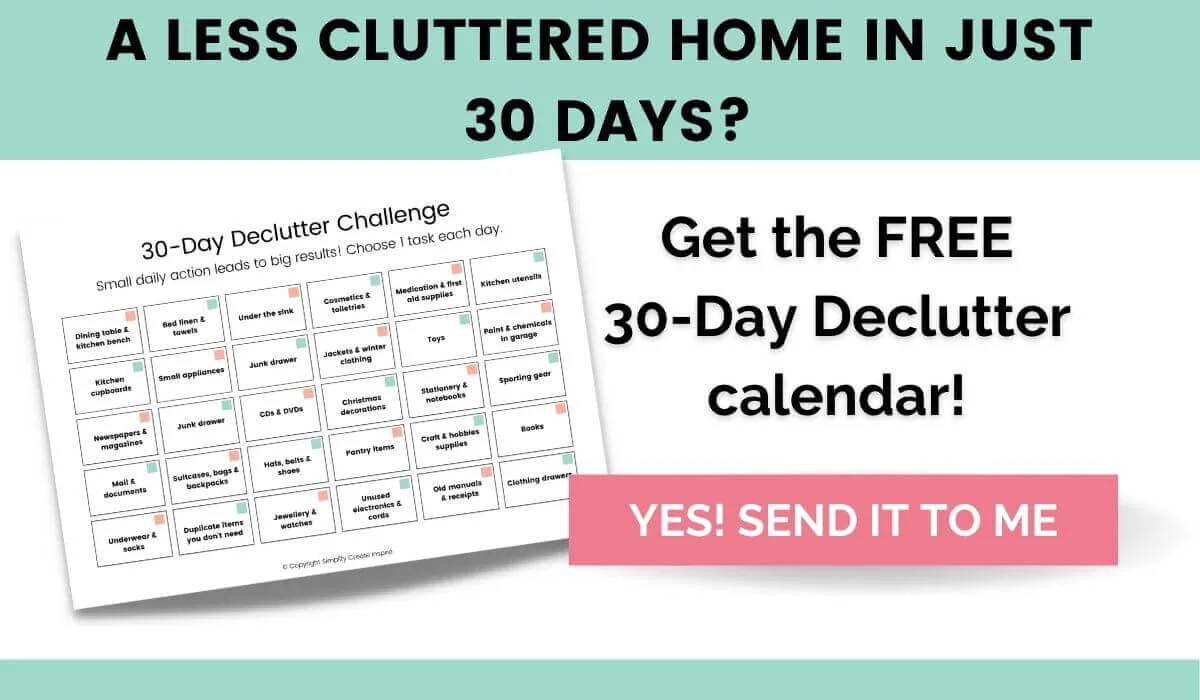
How Many Toys Does The Average Child Have?
How long is a piece of string? There is no easy way to answer this question since the number of toys depends on so many factors, so let’s instead focus on how many toys a child ‘needs’.
The ideal number of toys for a child depends on age.
Babies only require a couple of toys to stimulate their learning, adding a few extra as they start crawling and a few toy sets such as building blocks for toddlers.
Studies show that if provided with fewer toys, toddlers will typically play longer with each individual toy.
Typically it is past the toddler stage when the toy clutter really takes over since their collection often involves toys from each previous stage of their lives along with new age-appropriate toys.
Toys are there to facilitate imagination and inspire new variations of play, which makes open-ended toys a wonderful choice. Yet toys aren’t essential to play.
Rather than focusing on the number of toys your child has, focus instead on those that bring true joy and value to their lives at this point in time.
This is why it is important to declutter toys often!
How To Declutter Toys
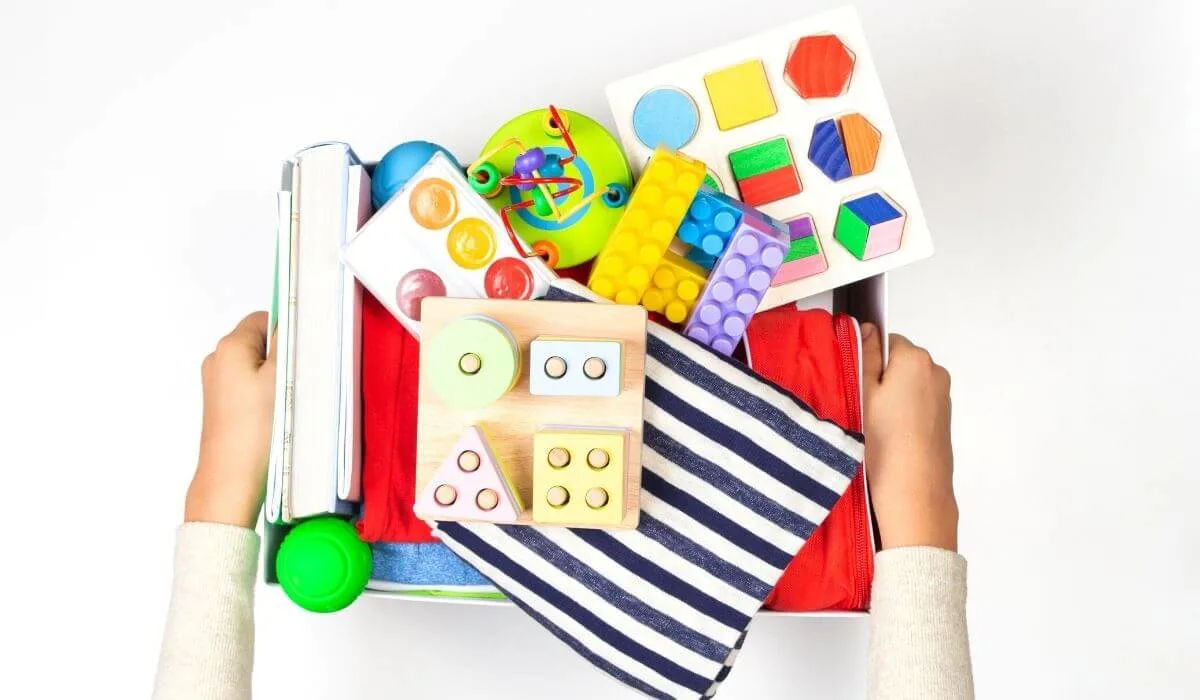
Even if you only have a few toys, the decluttering process can still be quite daunting. You want to make sure that any toy which is added back into the toy room will be thoroughly enjoyed and played with!
The best way to declutter children’s toys, as far as what has worked best for our household, is by following these steps:
Step 1 – Observe
This step might be one you can skip if you are already very familiar with your child’s play habits, however, start by taking some time in the lead up to your planned declutter to observe what toys your child plays with the most and take note of any that aren’t played with at all.
Of the toys your child isn’t playing with, think about these things:
- Have they outgrown these toys?
- Are there missing pieces, flat batteries or is the toy broken?
- Do these toys need to be played with others or are they independent play toys?
- Is your child spending more time playing video games or having screen time?
Setting screen time limits has been a positive change in our household and encourages much more imaginative play.
Also, consider whether the toys in your playroom include a good balance of open-ended toys.
Open-Ended Toys – Toys that children can use in many different ways to inspire creativity. Examples include toys such as building blocks, LEGO, playdough, art supplies, dress-ups, dolls, a play couch etc.
Close-Ended Toys – These toys only offer one way to play with them. Examples include a pull toy, puzzles, shape sorting toys
Step 2 – Sort
Bring all your child’s toys into the space you plan to use for decluttering. Make sure this is a wide-open space, such as a playroom floor or the living room.
Sort all the toys into different categories before you begin decluttering toys.
You may have all or some of the following categories:
- Dolls – Barbies, baby dolls, doll accessories
- Baby and toddler toys – rattles, teethers, soft books, stacking toys, sensory toys.
- Construction toys – blocks, LEGO, connectable toys, magnetic tiles.
- Imaginative play toys – Costumes, props, medical toy kit, play food.
- Creative toys – art and craft supplies, loom bands, craft kits.
- Transport toys – cars, train sets, race track, car mat, remote-controlled toys.
- Stuffed toys – teddy bears, stuffed animals.
- Active toys – balls, skipping rope, outdoor toys, skateboard, balance board, scooter, ride on bikes.
- Collectables – Collections of toys such as action figures, playsets and cards.
- Games – board games, card games, puzzles.
- Books – Board books, picture books, novels.
Step 3 – Declutter
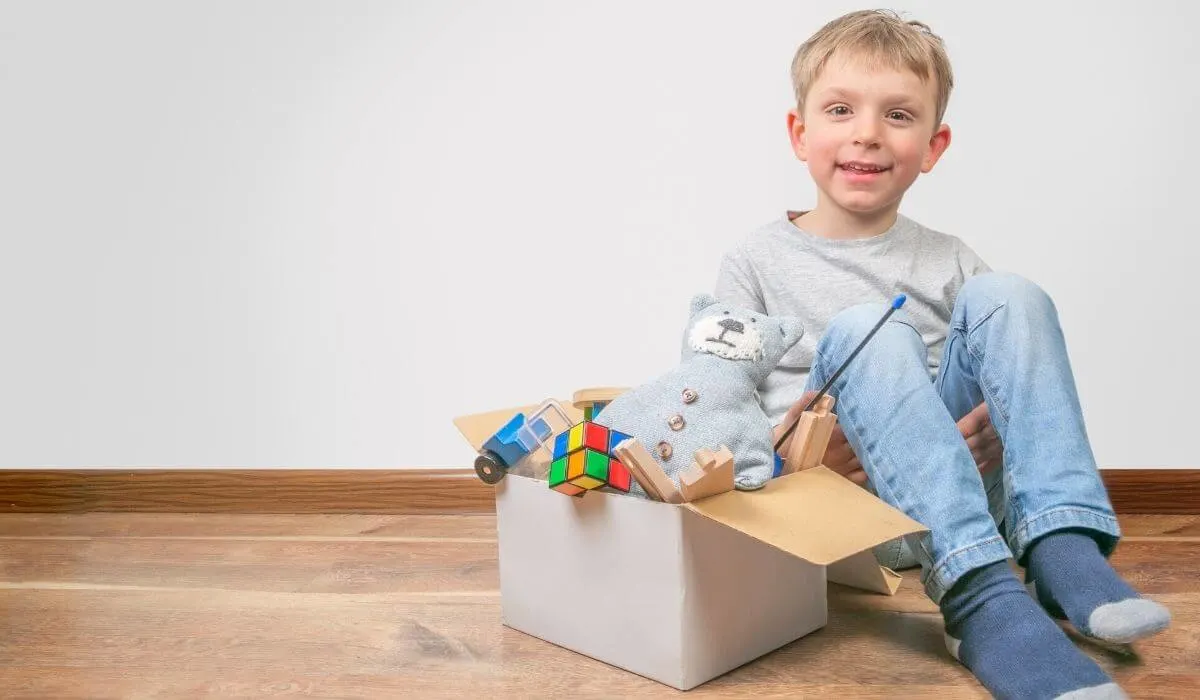
By sorting your toys into collections, it makes sorting far less daunting than attempting to do everything at once. You can instead tackle one category at a time which is really easy when you have all the related toys together in one place.
This will also help you identify duplicates, broken toys and any parts that you found that belong to a particular toy set.
The best thing about this method is that you can sort toys over a few decluttering sessions if needed, tackling a few categories at a time.
To declutter toys, set up 4 piles:
- Rubbish
- Donate
- Sell
- Keep
It helps to have a trash bag for the rubbish and either a bag or a cardboard box to collect donations and sell items.
Make sure you also declutter your outdoor toys as well!
Step 4 – Organise
Before you put the toys back, take the time to clean out toy boxes, shelves and any other surfaces in your kid’s playroom. Give everything a vacuum and a wipe down.
Now it’s time to put the toys you are keeping away.
If your existing storage system is working well and simply needed a toy to downsize, you can return them to their home.
If your toy storage systems aren’t working for you, now is the time to explore some alternatives.
Here are some ideas for how to organise kids toys:
Step 5 – Get Rid Of Excess Toys
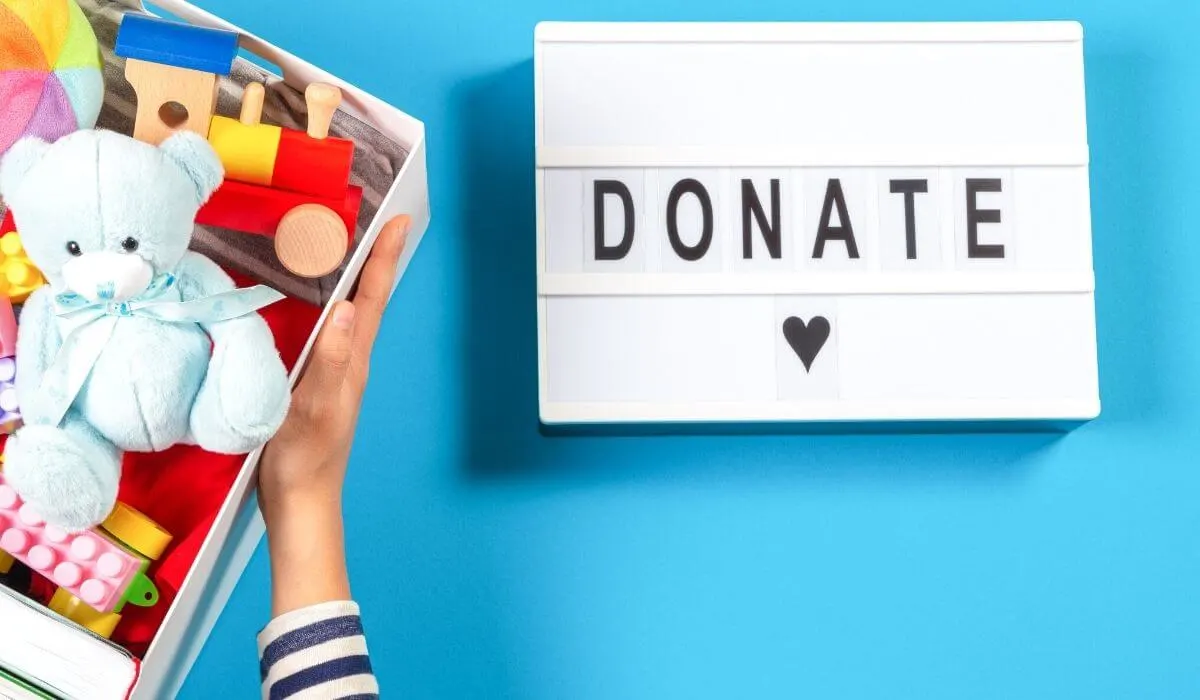
Once decluttered, make sure you remove unwanted toys from your home quickly.
This reduces the temptation of kids taking items back from the sell, trash or donate pile.
Make a plan to drop off donations ASAP to a thrift store or charity. If you don’t have transport, list them on a local buy swap and sell group or Facebook marketplace for free.
A lot of small businesses will take toy donations for their waiting rooms or of course, families in need who will appreciate some new toys to play with.
As for toys you plan to sell, make sure it is worth your time, that they are in good condition, and there is enough demand. If you’re only going to make a few dollars, often donating is a better option.
A garage sale is another option if it is planned soon after your toy declutter. This is a good way to sell a lot of other household clutter at the same time.
And of course, trash should be thrown out that same day! Goodbye clutter… thanks for the memories!
Toy Rotation Vs Minimalist Playroom
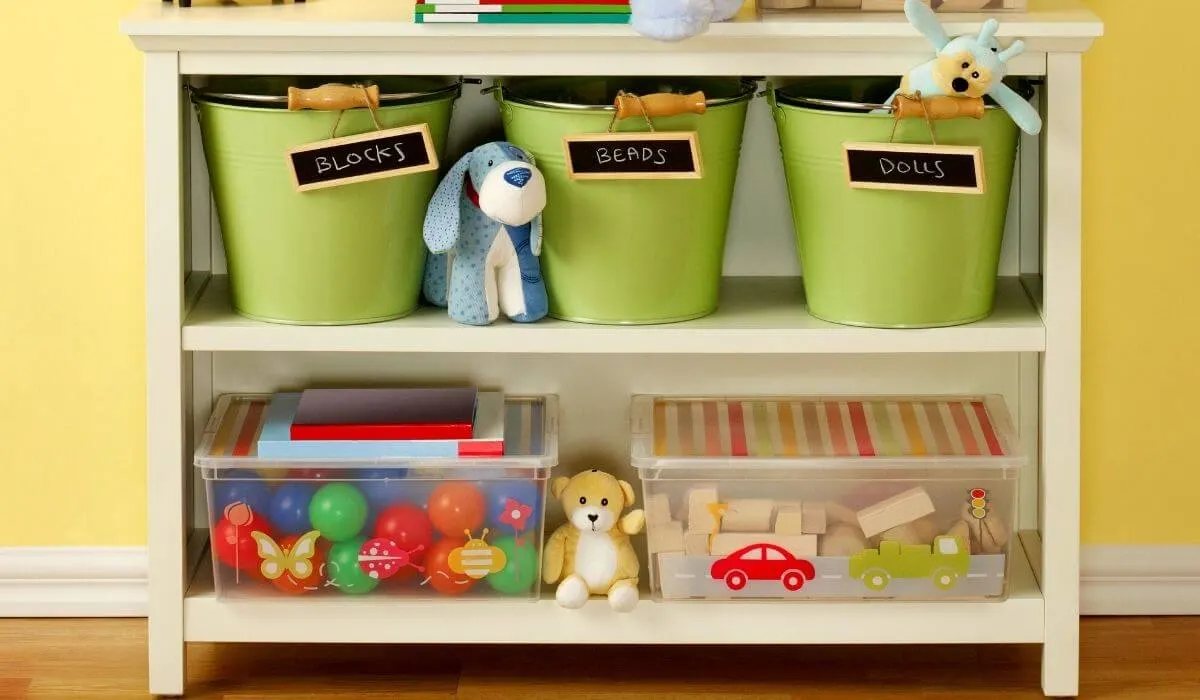
Have you been considering taking a minimalist approach to toys in your home, as a way to minimise the toy clutter? There are certainly benefits to adapting minimalism to toys.
You will have less toys to tidy up, require less storage and this approach is also perfect for small playrooms where there isn’t a lot of extra space to store toys.
It also encourages children to utilise their imagination beyond playing with toys.
However, if minimalism is not for you and you still want to manage the number of toys in your playroom at any one time, toy rotation is the perfect option!
Toy rotation is a process where you only have a few toys out at any one time, having the rest stored away and then rotating them on occasion.
This means there is less clutter and when your kids begin to bore of their existing toys, you can rotate them out and renew their excitement for the toys they have not played with for a while.
Toy rotation is ideal if you have the storage space to store your extra toys, such as a large storage container or two that you can keep out of sight until you are ready to switch them again.
Using a Kallax or cube storage shelf can be a great way to rotate out toy bins as well.
Another great way to minimise toy clutter is to encourage clutter-free gifts, useful gifts for kids and experience gifts for your children from family and friends who want to give them gifts.
How To Declutter Your Child’s Bedroom
If you do not have a playroom and your kids’ toys are kept in their bedroom, you can declutter kids rooms in much the same way you would with a playroom declutter.
Otherwise, even when your kid’s toys are kept in a shared part of the home, they often accumulate a few things in their bedrooms too so it is always good to declutter their bedrooms often as well.
Younger kids can help declutter their bedroom by picking up items from the floor and putting them where they belong.
Older kids can help sort through toys, clothing, and anything else they have in their bedrooms.
For tips on how to declutter your home, step by step, check out this decluttering guide.
How To Get Your Child To Help With Decluttering
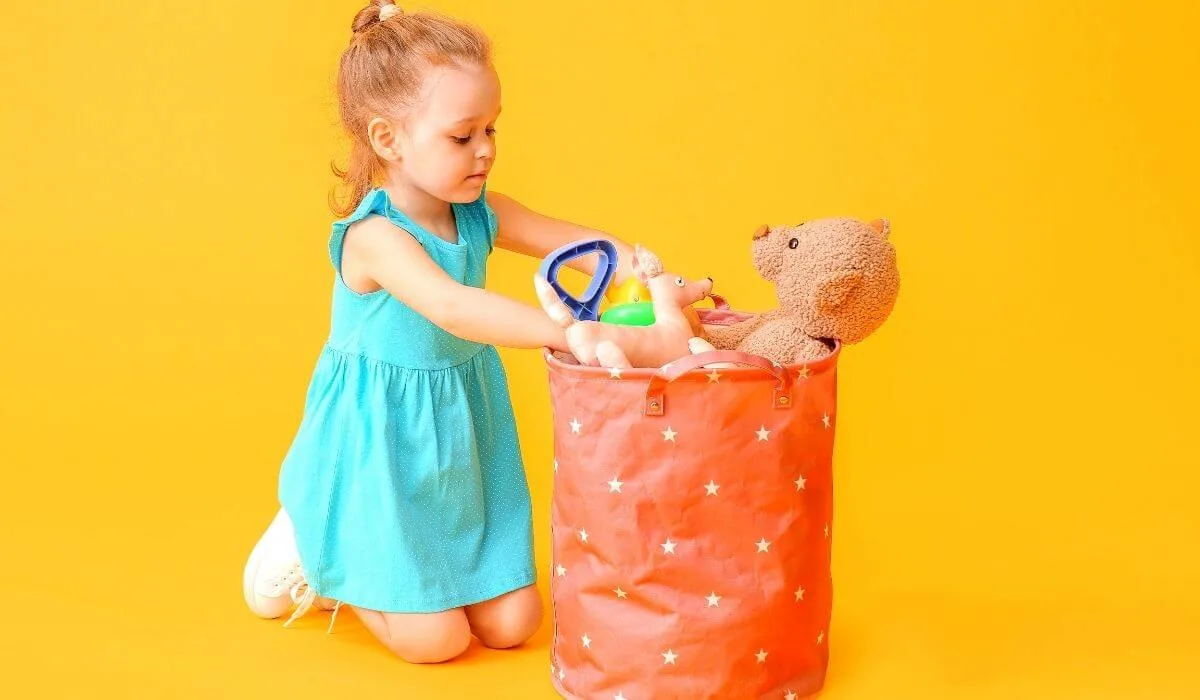
While decluttering toys with kids may seem like an insurmountable task, there are ways to make it simpler!
And having more hands on deck can make lighter work of a very big task – providing you aren’t met with too many protests!
You can divide up the tasks with your children and allow them to assist with sorting items into categories. This is a great task for kids to help with since this stage doesn’t require any actual decluttering yet.
Once sorted, have your child focus on easy quick wins – broken items that can go in the trash.
Then set them a toy category, such as baby toys to sort through, since this is a category of toys they are less likely to want to hold onto and therefore an easier category for kids to declutter.
It can also help to set boundaries with your children, such as limiting the number of certain types of toys they can keep.
This might be limiting them to keeping just 15 Barbie dolls or 20 toy cars.
This gives a sense of control and helps kids feel much more invested in how their toy situation looks from now on, which will hopefully lead to less arguing when it comes time for future declutters!
You can also work some of these cleaning games into your decluttering session as a way of making decluttering with kids more fun.
If your child is really resistant to parting with anything, and there are items of value that are worth selling, you can offer them the profit from selling their toys, or share the profits. This is a great incentive for them to set a goal to make enough money to buy something they really want.
Letting go of toys is a difficult process for many kids so be gentle with them and understand that this may be hard for them. Use language that is supportive of your child as they prepare to part with items they have been very attached to in the past. Just as adults, we struggle to part with sentimental clutter, toys are linked to strong emotions for our children!
Staying Clutterfree With Kids
Once you know how to downsize toys and eliminate excess toys from your home, the goal is to stay clutterfree with kids!
Decluttering kids’ toys gets much easier if you put a few simple strategies in place to maintain your child’s toy collection. It also helps if keeping toys tidy is part of their regular chores.
Here are some of our favourite strategies:
One In One Out Rule
Keeping things clutter-free with children is never easy, but you can adopt the one in one out decluttering rule as a good starting point.
When an item comes into your home that isn’t absolutely necessary for living (such as food and clothing) you need to remove something else from your home to make space for it.
These decluttering rules can be used for all members of the family and not just for decluttering toys.
Donate Before Special Occasions
A variation of one in and one out are the simple rules of having a toy declutter before each special occasion, such as Christmas or birthdays when new toys are expected to be given.
You can do a full toy declutter, which will be much faster if you do it at least twice a year, or you can ask your children to each find 3-5 toys they no longer need to donate to someone else in need.
This is a great way of decluttering with kids, while also teaching them the importance of giving to others.
Daily Pick Up Habit
You can also try the daily pick up habit to declutter toys with kids.
Pick a time each day at which you will spend only five minutes tidying up and decluttering your home. This is a wonderful family habit to adapt into your daily lives, which the entire family joining in for 5 minutes a day
During these daily pick up sessions, items will be put back where they belong and it is also an opportunity to remove rubbish or broken items before they get mixed in with the toy boxes.
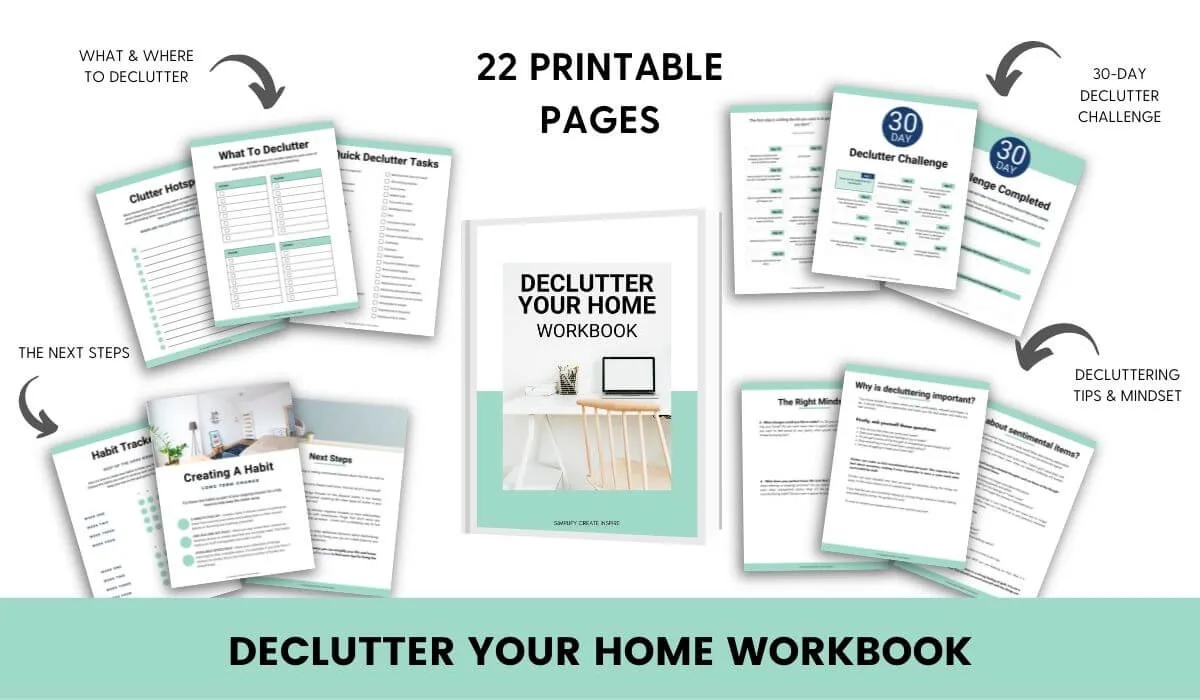
Whether you want to declutter with kids or find easy steps to reduce the amount of clutter in your home, there are plenty of ways to do this. From toy rotation and minimalism playrooms to one-in-one-out decluttering, these methods can help keep things clean and tidy without driving yourself crazy! Once you know how to declutter kids toys, this process gets easier and easier each time.
Further reading:
- The best books about decluttering
- Ways you can simplify your life and be happier
- How to start decluttering when you feel overwhelmed
- 150 items to declutter quickly
- 10 minute decluttering tasks and quick wins
- How decluttering can save you money
- The 1 box decluttering method
- How to create your own home management binder
- Outdoor toy storage ideas
- House cleaning hacks
- How to clean your house quicker
- Toy storage ideas for kids
- Questions to ask when decluttering
- Things you can throw away right away
- Bedroom declutter
- Bathroom declutter
- Garage declutter
- Kitchen declutter
- Living room declutter
